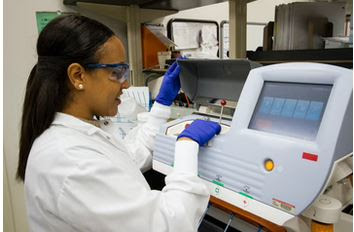Does Medicare Cover Peripheral Artery Disease Vascular Test?

Peripheral
artery disease (PAD) is one of the most common circulatory condition that
affects millions of Americans, particularly those over the age of 50. Early
detection and diagnosis of PAD are crucial for preventing complications and
managing the condition effectively. Many individuals rely on Medicare for their
healthcare coverage, but does Medicare cover peripheral artery disease vascular
testing? In this blog, we'll explore Medicare coverage for PAD vascular testing
and provide insights into accessing peripheral vascular testing equipment.
Peripheral Artery Disease and Vascular Testing:
Peripheral artery disease (PAD) occurs when narrowed arteries reduce the blood flow to the limbs, typically the legs. Vascular testing plays a critical role in diagnosing PAD by assessing blood flow and detecting abnormalities in the arteries. Common vascular tests for PAD include ankle-brachial index (ABI) testing, duplex ultrasound, segmental pressure testing, and arterial Doppler ultrasound. These tests help evaluate blood pressure, blood flow velocity, and arterial blockages, aiding in the diagnosis and management of PAD.
Medicare Coverage for PAD Vascular Testing:
Medicare, the federal health insurance program for individuals aged 65 and older, may cover certain vascular testing procedures for peripheral artery disease (PAD) under specific circumstances. Coverage for PAD vascular testing typically falls under Medicare Part B, which covers outpatient services, including diagnostic tests and procedures. Medicare Part B may cover peripheral vascular testing equipment for PAD if it is deemed medically necessary and ordered by a healthcare provider to evaluate symptoms such as leg pain, numbness, or cramping.
Ankle-Brachial Index (ABI) Testing:
Medicare Part B covers ankle-brachial index (ABI) testing, a common diagnostic test used to assess blood flow in the legs and diagnose PAD. ABI testing compares blood pressure measurements taken at the ankle and the arm to determine the ratio of blood flow in the lower extremities. Medicare may cover ABI testing for individuals with symptoms suggestive of PAD, such as leg pain or claudication, as well as those with risk factors such as diabetes, smoking, or a history of cardiovascular disease.
Duplex Ultrasound and Arterial Doppler Testing:
Medicare Part B may also cover duplex ultrasound and arterial Doppler testing for peripheral artery disease (PAD) under certain circumstances. These imaging tests use sound waves to visualize blood flow in the arteries and assess for blockages, narrowing, or other abnormalities. Medicare coverage for duplex ultrasound and arterial Doppler testing may vary depending on the specific indications and medical necessity determined by a healthcare provider.
Accessing Peripheral Vascular Testing Equipment:
Healthcare providers and facilities that offer peripheral vascular testing equipment can help patients navigate Medicare coverage and access the necessary diagnostic tests for PAD evaluation. By working with Medicare-certified providers and facilities, patients can ensure that their vascular testing needs are met in accordance with Medicare guidelines and coverage criteria. Additionally, patients should consult with their healthcare providers to determine the most appropriate vascular testing procedures based on their individual symptoms, risk factors, and medical history.



Comments
Post a Comment